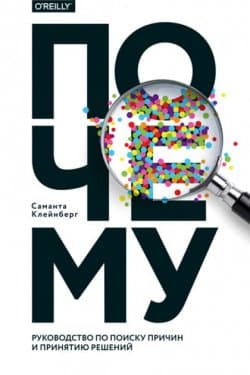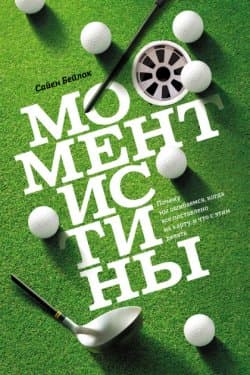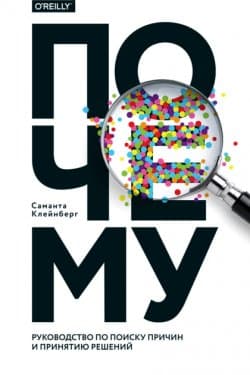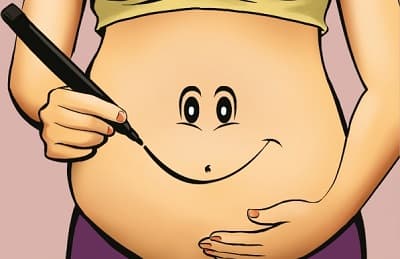Почему - Саманта Клейнберг (2017)
-
Год:2017
-
Название:Почему
-
Автор:
-
Жанр:
-
Язык:Русский
-
Страниц:160
-
Рейтинг:
-
Ваша оценка:
Автор показывает, что такое причинно-следственная связь, поясняет, почему в ее определении мы часто ошибаемся, как можно принимать верные решения. Благодаря этой книге вы научитесь анализировать информацию, выявлять причинно-следственные связи, объединять прошлое, предсказывать будущее.
Книга будет интересна философам, аналитикам, экономистам, медикам, юристам, начинающим ученым.
Почему - Саманта Клейнберг читать онлайн бесплатно полную версию книги
Gabriel, A. and Mercado, C. P. (2011). Data retention after a patient withdraws consent in clinical trials. Open Access Journal of Clinical Trials, 3: 15–19.
Gemelli, A. and Cappellini, A. (1958). The influence of the subject’s attitude in perception. Acta Psychologica, 14: 12–23.
Ginsberg, J., Mohebbi, M. H., Patel, R. S., Brammer, L., Smolinski, M. S., and Brilliant, L. (2009). Detecting influenza epidemics using search engine query data. Nature, 457: 1012–1014.
Glasgow, R. E., Lichtenstein, E., and Marcus, A. C. (2003). Why Don’t We See More Translation of Health Promotion Research to Practice? Rethinking the Efficacy-to-Effectiveness Transition. American Journal of Public Health, 93(8): 1261–1267.
Glennan, S. (1996). Mechanisms and the Nature of Causation. Erkenntnis, 44(1): 49–71.
Glennan, S. (2002). Rethinking Mechanistic Explanation. Philosophy of Science, 69(3): S342–S353.
Godfrey-Smith, P. (2010). Causal Pluralism. In H. Beebee, C. R. Hitchcock, and P. Menzies (eds.), Oxford Handbook of Causation, pp. 326–337. Oxford University Press, Oxford.
Goldman, D. P., Joyce, G. F., and Zheng, Y. (2007). Prescription Drug Cost Sharing: Associations With Medication and Medical Utilization and Spending and Health. Journal of the American Medical Association, 298(1): 61–69.
Good, I. J. (1961). A Causal Calculus (I). British Journal for the Philosophy of Science, 11(44): 305–318.
Gopnik, A., Sobel, D. M., Schulz, L. E., and Glymour, C. (2001). Causal Learning Mechanisms in Very Young Children: Two-, Three-, and Four-Year-Olds Infer Causal Relations From Patterns of Variation and Covariation. Developmental Psychology, 37(5): 620–629.
Gopnik, A., Glymour, C., Sobel, D. M., Schulz, L. E., Kushnir, T., and Danks, D. (2004). A Theory of Causal Learning in Children: Causal Maps and Bayes Nets. Psychological Review, 111(1): 3–32.
Granger, C. W. J. (1980). Testing for Causality: A Personal Viewpoint. Journal of Economic Dynamics and Control, 2: 329–352.
Green, J. (2012). The Science Behind Those Obama Campaign E-Mails. Bloomberg Businessweek. Retrieved from
Greville, W. J. and Buehner, M. J. (2010). Temporal Predictability Facilitates Causal Learning. Journal of Experimental Psychology: General, 139(4): 756–771.
Griffiths, T. L., Sobel, D. M., Tenenbaum, J. B., and Gopnik, A. (2011). Bayes and Blickets: Effects of Knowledge on Causal Induction in Children and Adults. Cognitive Science, 35(8): 1407–1455.
Griffiths, T. L. and Tenenbaum, J. B. (2005). Structure and strength in causal induction. Cognitive Psychology, 51(4): 334–384.
Grodstein, F., Stampfer, M. J., Colditz, G. A., Willett, W. C., Manson, J. E., Joffe, M., Rosner, B., Fuchs, C., Hankinson, S. E., Hunter, D. J., Hennekens, C. H., and Speizer, F. E. (1997). Postmenopausal Hormone Therapy and Mortality. The New England Journal of Medicine, 336(25): 1769–1775.
Groves, R. M., Fowler Jr., F. J., Couper, M. P., Lepkowski, J. M., Singer, E., and Tourangeau, R. (2009). Survey Methodology, 2nd edition. John Wiley & Sons, Hoboken, NJ 2nd edition.
Grünbaum, A. (1981). The placebo concept. Behaviour Research and Therapy, 19(2): 157–167.
Grzegorczyk, M. and Husmeier, D. (2009). Non-stationary continuous dynamic Bayesian networks. In Proceedings of the 23rd Annual Conference on Neural Infor-mation Processing Systems.
Guyatt, G. H., Oxman, A. D., Vist, G. E., Kunz, R., Falck-Ytter, Y., Alonso-Coello, P., and Schünemann, H. J. (2008). GRADE: An emerging consensus on rating quality of evidence and strength of recommendations. BMJ, 336(7650): 924–926.
Gweon, H. and Schulz, L. (2011). 16-Month-Olds Rationally Infer Causes of Failed Actions. Science, 332(6037): 1524.
 Почему они не работают? Новый взгляд на мотивацию сотрудников Сьюзен Фаулер
Почему они не работают? Новый взгляд на мотивацию сотрудников Сьюзен Фаулер
 Королевство Аманда Стивенс
Королевство Аманда Стивенс
 Почему Саманта Клейнберг
Почему Саманта Клейнберг
 Момент истины. Почему мы ошибаемся, когда все поставлено на карту, и что с этим делать? Сайен Бейлок
Момент истины. Почему мы ошибаемся, когда все поставлено на карту, и что с этим делать? Сайен Бейлок
 Почему. Руководство по поиску причин и принятию решений Саманта Клейнберг
Почему. Руководство по поиску причин и принятию решений Саманта Клейнберг
 Здравый смысл врет. Почему не надо слушать свой внутренний голос Уоттс Дункан
Здравый смысл врет. Почему не надо слушать свой внутренний голос Уоттс Дункан

 Пир теней
Пир теней  Князь во все времена
Князь во все времена  Когда порвется нить
Когда порвется нить  Пока я здесь
Пока я здесь 



